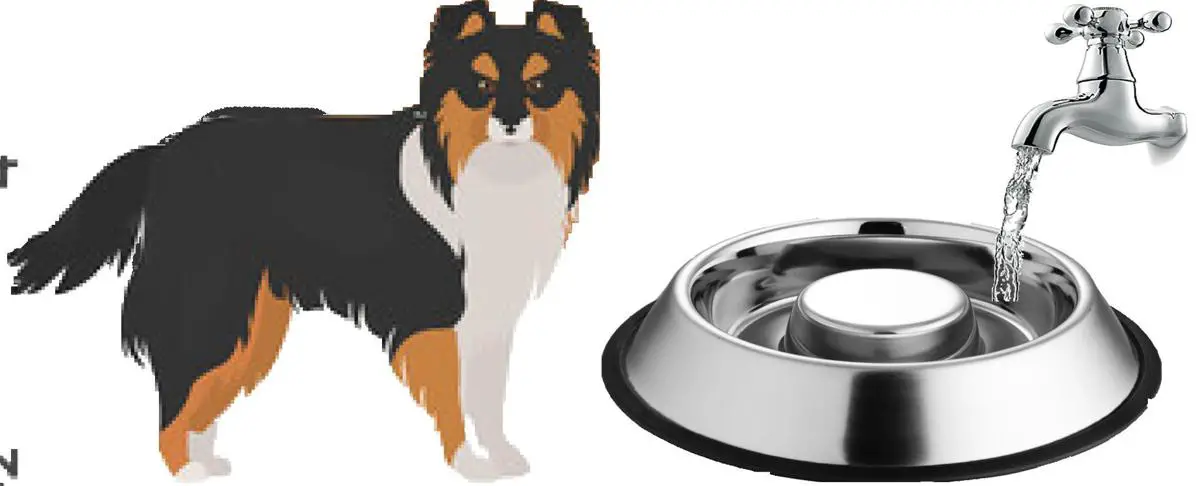Quick Links: Table of Contents
- Shetland Sheepdog Breed Overview
- History of the Shetland Sheepdog Breed. Where Shetland Sheepdogs came from
- What the Shetland Sheepdog Looks Like
- How Much is the Shetland Sheepdog Puppy?
- Best Shetland Sheepdog Breeders
- Adopting or Rescuing the Shetland Sheepdog
- Shetland Sheepdog Growth
- The Temperament of the Shetland Sheepdog
- How Long Shetland Sheepdogs Live
- Shetland Sheepdog Litter Size
- How Fast Shetland Sheepdogs Can Run
- Good Names for Shetland Sheepdogs
- How Intelligent are Shetland Sheepdogs?
- How Popular are Shetland Sheepdogs with New Dog Owners?
- Health Problems in Shetland Sheepdogs and How to Prevent Them
- How to Take Care of Shetland Sheepdog
- Dog Breeds That Are Similar to Shetland Sheepdogs
- Other Things to Know About Shetland Sheepdogs
Shetland Sheepdog Breed Overview
The Shetland Sheepdog is a small-sized dog.
The adult Shetland Sheepdog stands 13 to 16 inches tall at the shoulder.
The Shetland Sheepdog belongs to the Herding Dogs group.
Dogs in the Herding Dogs group, like the Shetland Sheepdog, were bred for moving livestock, including sheep, cattle, and even reindeer.
Herding dogs work closely with their human shepherds, and their natural intelligence and responsiveness make them highly trainable.
Herding dogs have high levels of energy, which needs to be channeled properly to prevent destructive behavior.
Herding breeds are protective of their people and property and make excellent watchdogs. Their intelligence, agility, and activity level make them well suited to dog sports.
The fact that the Shetland Sheepdog belongs to the Herding Dogs group is one of the reasons why Shetland Sheepdogs have the personality and temperament that they have.
The temperament of the Shetland Sheepdog is generally described as:
- Active
- Affectionate
- Alert
- Eager
- Gentle
- Intelligent
- Lively
- Loyal
- Playful
- Reserved
- Responsive
- Strong
- Trainable
History of the Shetland Sheepdog Breed. Where Shetland Sheepdogs came from
The Shetland Sheepdog is a descendant of the Collie, and was originally bred to herd sheep in the Shetland Islands off the coast of Scotland.
These dogs are known for their high energy level and love of exercise, and make excellent family pets.
They are also known for their tendency to bark, which can make them good watchdogs.
.
What the Shetland Sheepdog Looks Like
The Shetland Sheepdog is a small, sturdy dog that is typically black and white in color.
This breed is known for its long fur, which requires regular brushing to keep it healthy and free from knots.
Shelties are often used as working dogs, and are prized for their intelligence and obedience.
.
How Much is the Shetland Sheepdog Puppy?

The average price of a Shetland Sheepdog puppy is $1590. The price of a Shetland Sheepdog puppy ranges from $1000 to $2000.
A lot of factors determine the price of the Shetland Sheepdog. These factors include what health records the Shetland Sheepdog puppy has, the lineage of the Shetland Sheepdog puppy, the US state the breeder is located in, etc.
To estimate how much you can expect to pay for a puppy Shetland Sheepdog based on the many factors that determine the price of the Shetland Sheepdog puppy, check out our calculator that lets you estimate how much you should expect to pay for the Shetland Sheepdog puppy based on what you want in the puppy.
When looking to buy a puppy, look at buying a puppy only from well-established breeders that breed puppies primarily for the love of the Shetland Sheepdog breed, and secondarily for profit. Do not buy a puppy from a puppy mill. Puppy mills mass-produce puppies in bad living conditions for maximum profit.
You may also consider adopting instead of buying a puppy. Adoption costs are very low compared to the price of a puppy.
Best Shetland Sheepdog Breeders
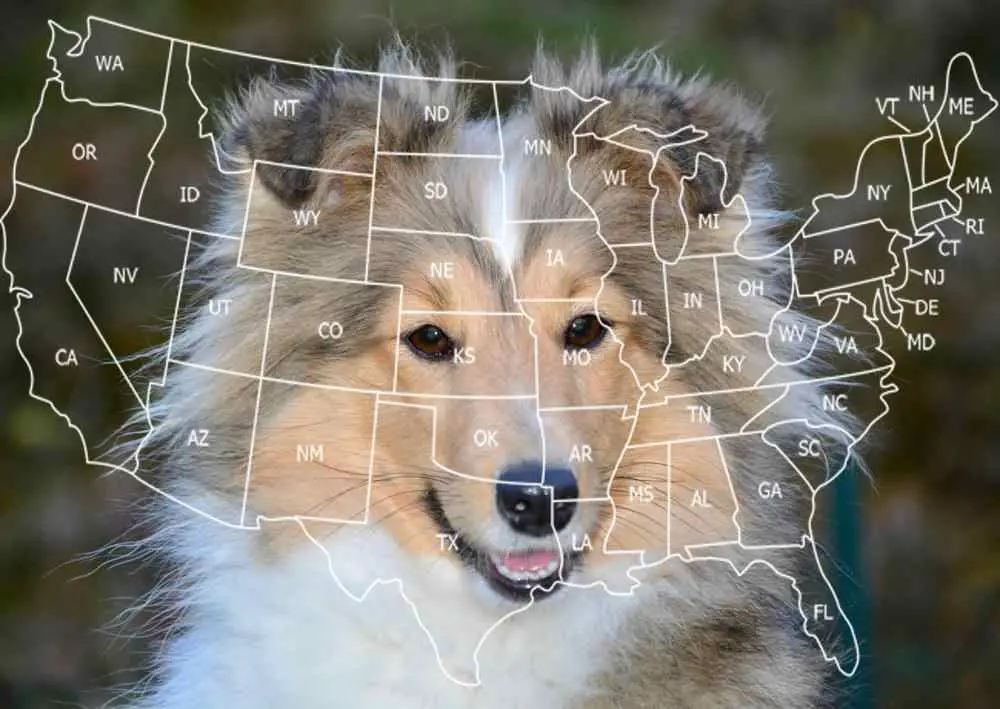
We have researched reputable Shetland Sheepdog breeders that you can buy a puppy.
Go to this page for our complete list of reputable Shetland Sheepdog breeders in various states in the United States.
On this page, you will see how much these breeders sell their puppies for, and how many puppies they have available.
A few of these breeders are listed below.
Ashley Gajda / Southside Shelties
Puppy Price: Check with breeder
REGINALD HORNER
Puppy Price: Check with breeder
Lisa Brodsky
Puppy Price: $750
Lake Norman Shelties
Puppy Price: $1000.00/11.00
James Hess
Puppy Price: $1800
Adopting or Rescuing the Shetland Sheepdog
You may consider adopting a dog instead of buying a puppy. Many dogs, Shetland Sheepdogs included, are currently available for adoption in your local dog shelters.
These helpless but adorable dogs are waiting in dog shelters hoping that someday someone will rescue them. Dog adoption costs are lesser than the cost of a new puppy. Dog adoption costs are usually around $300 or even less.
In addition to your local dog shelter, another good place to find dogs that are available for adoption is petfinder.com.
Below is an adorable Male Shetland Sheepdog named Roo that is currently available for adoption on Petfinder.com. You can find other lovely Shetland Sheepdogs like Roo on pefinder.com.

Fox is the name of another Shetland Sheepdog (Male) on petfinder.com that is looking for a new forever home.

You can find more Shetland Sheepdogs that are available for adoption on petfinder.
Shetland Sheepdog Growth

New Shetland Sheepdog owners need to know about the growth of their Shetland Sheepdogs. This will help them plan their living spaces accordingly.
Also, knowing the typical growth pattern of the Shetland Sheepdog will help new owners catch the abnormal growth of their Shetland Sheepdog early.
See our calculator for predicting how big your Shetland Sheepdog puppy will get. You will also learn about the typical weight of the Shetland Sheepdog at different ages and how to catch abnormal growth in your Shetland Sheepdog
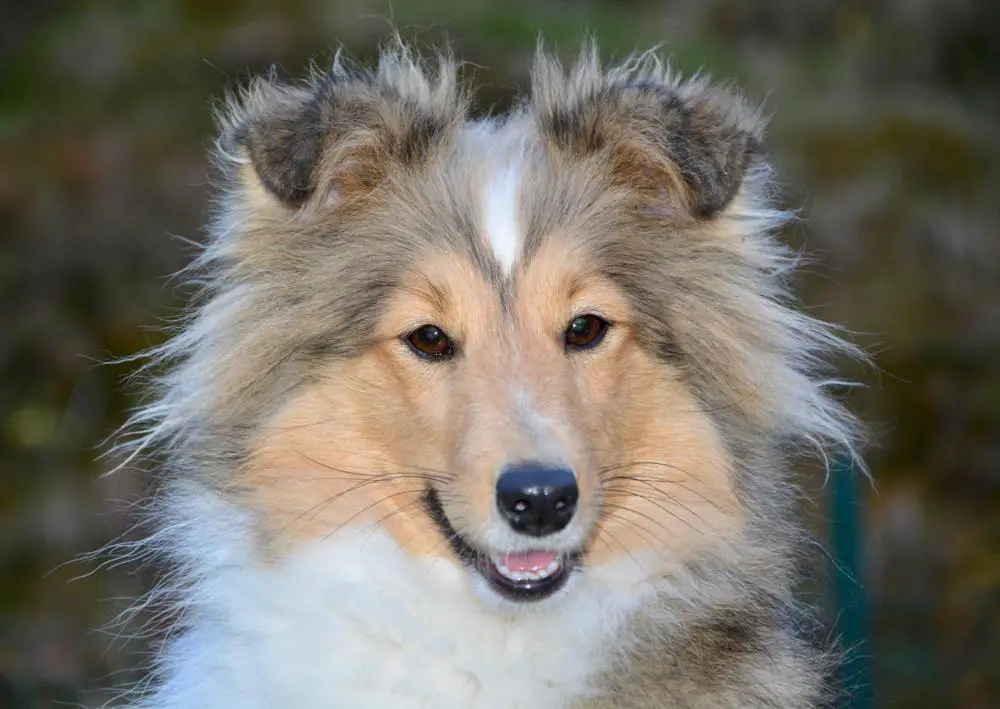
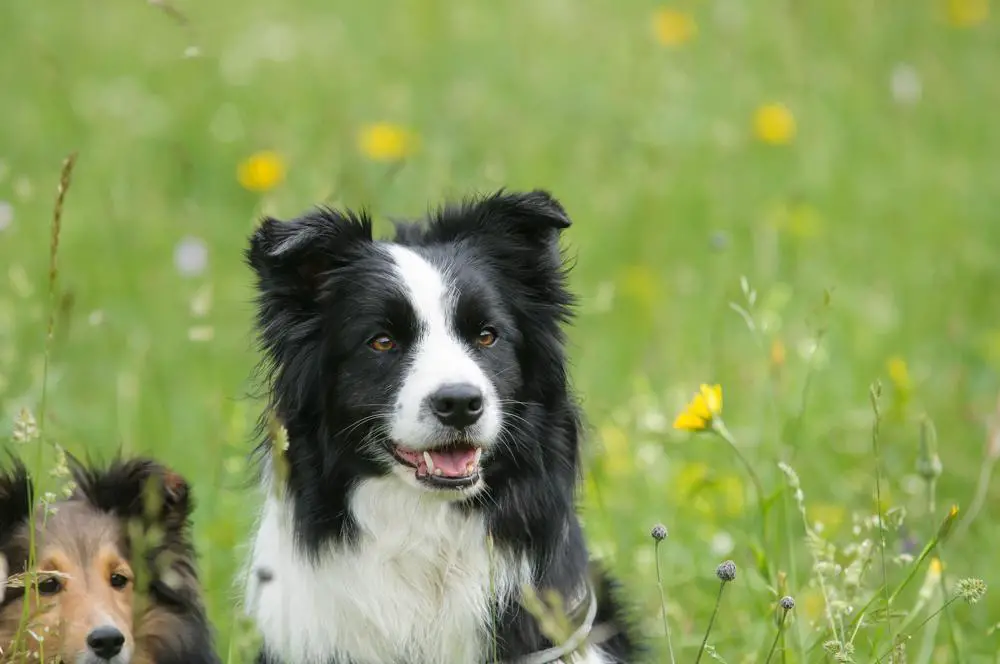
The Temperament of the Shetland Sheepdog
The temperament of the Shetland Sheepdog based can be summarized as in the table below.
The table shows the scores of the Shetland Sheepdog for 13 important dog behavioral factors.
We obtained these scores by analyzing raw data from the C-BARQ dog personality survey tool. The higher the score of a dog for a factor, the worse the temperament of the dog regarding that factor.
The C-BARQ tool was developed by researchers from the University of Pennsylvania, and it is a scientific tool that is used worldwide for reliably measuring the temperament of dog breeds.
See our complete analysis of the temperament of the Shetland Sheepdog here.
| Factor | Score |
|---|---|
| Energy Level | 57.3 percent |
| Nonsocial Fear | 48.1 percent |
| Attachment Attention Seeking | 46.9 percent |
| Stranger Directed Fear | 44.0 percent |
| Excitability | 41.7 percent |
| Dog Directed Fear | 40.8 percent |
| Dog Rivalry | 38.0 percent |
| Separation Related Behavior | 29.0 percent |
| Prey Drive | 27.1 percent |
| Stranger Directed Aggression | 26.3 percent |
| Touch Sensitivity | 25.6 percent |
| Dog Directed Aggression | 20.3 percent |
| Stubbornness | 15.7 percent |
| Owner Directed Aggression | 14.8 percent |
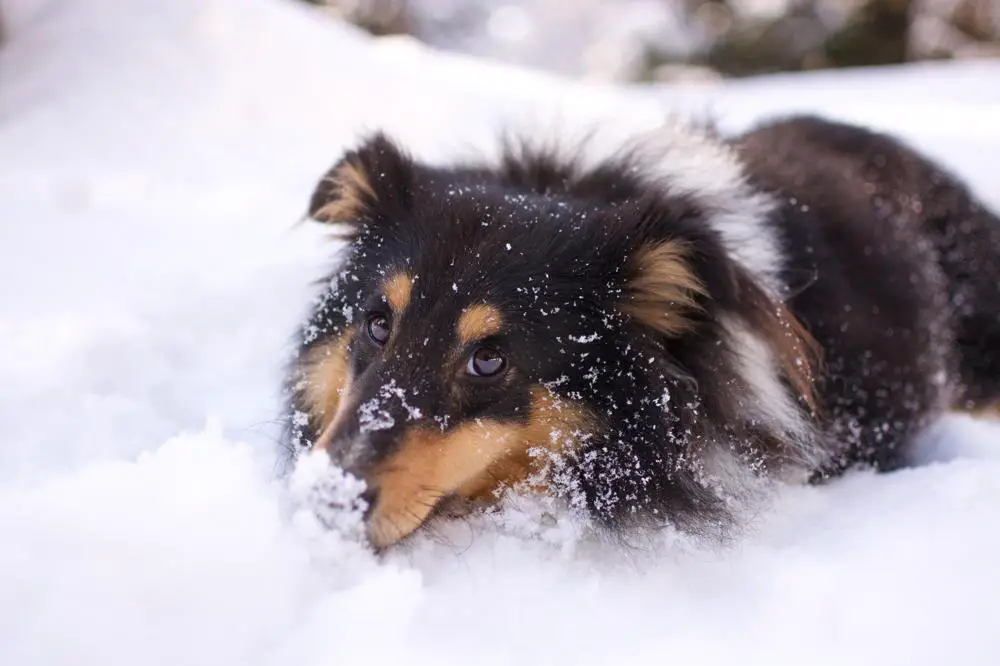
How Long Shetland Sheepdogs Live
The lifespan of the Shetland Sheepdog is typically from 12 to 15 years.
Moreover, a few years back, veterinarian researchers performed a scientific study to determine the lifespan of the Shetland Sheepdog. In this study, the scientists collected data on how long 364 pet Shetland Sheepdogs lived.
From the study, it was found that Shetland Sheepdogs have an average lifespan of 12.5 years. Furthermore, the study found that it is not uncommon for Shetland Sheepdogs to live as long as 19 years.
Note that you need to put in some effort if you want your Shetland Sheepdog to live long.
Shetland Sheepdogs live long if they eat well, drink well, exercise well, and visit the veterinarian regularly.
There are also dog supplements that you can give your Shetland Sheepdog to improve your Shetland Sheepdog`s quality of their life.
Click here to learn more about how to make your Shetland Sheepdog live long.
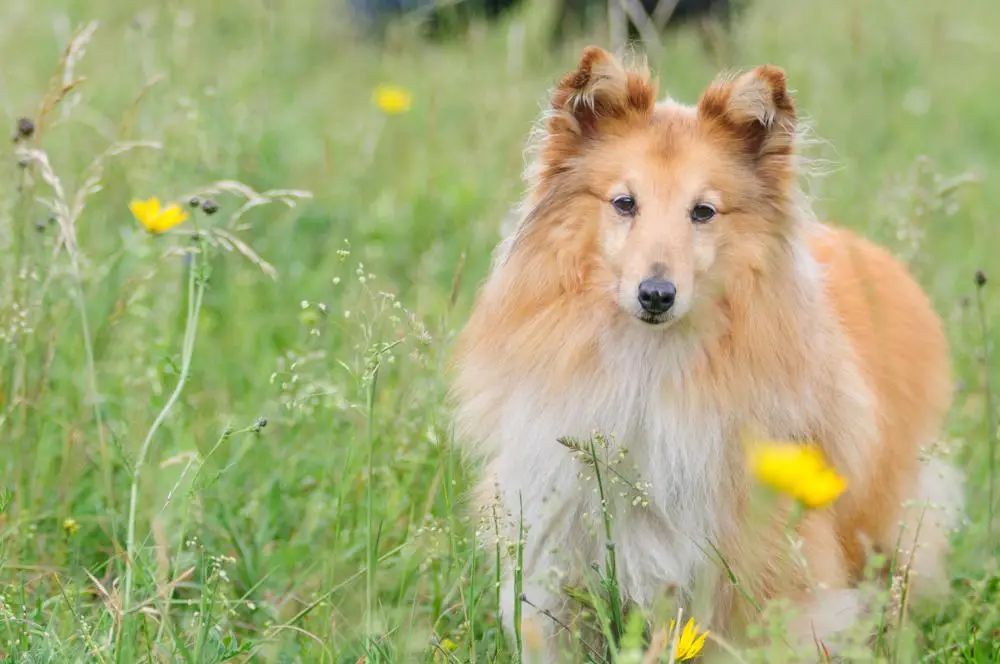
Shetland Sheepdog Litter Size
Researchers from the Norwegian School of Veterinary Science did a study where they counted the numbers of puppies in 292 different Shetland Sheepdog birth litters.
From this study, the researchers found that the average number of puppies that Shetland Sheepdogs can have is 3 puppies. Also, the Shetland Sheepdog can have as few as 1 puppies per litter and as many as 8 puppies per litter.
The number of puppies that the Shetland Sheepdog will have depends on factors such as the age of the Shetland Sheepdog, the method of pregnancy, etc.
Click here to see our calculator for predicting how many puppies your Shetland Sheepdog will have and how the litter size of the Shetland Sheepdog compares to the litter size of other dog breeds.
How Fast Shetland Sheepdogs Can Run

How fast a dog breed can run is a good measure of how athletic the dog breed is.
The American Kennel Club (AKC) regularly conducts dog running competitions. The AKC records the running speed of competing dogs in these competitions. These competitions are open to all dog breeds.
Based on our analysis of the speeds of 313 different Shetland Sheepdogs, the average speed of the Shetland Sheepdog is 19.9 mph (32.1 kmph).
The fastest speed on AKC record that the Shetland Sheepdog ran in a race is 27.56 mph (44.4 kmph) and the minimum speed on record in a race for a Shetland Sheepdog is 4.85 mph (7.8 kmph).
Click here to see how the speed of the Shetland Sheepdog compares to the speed of other dogs and other mammals such as cats, horses, humans, etc.

Good Names for Shetland Sheepdogs
Here are some really good names that are typical for the Shetland Sheepdog ranked by popularity:
- Charlie
- Popo
- Oliver
- Roo
- Max
- Johnny
- Pumpkin
- Jazz
- Kirby
- Max
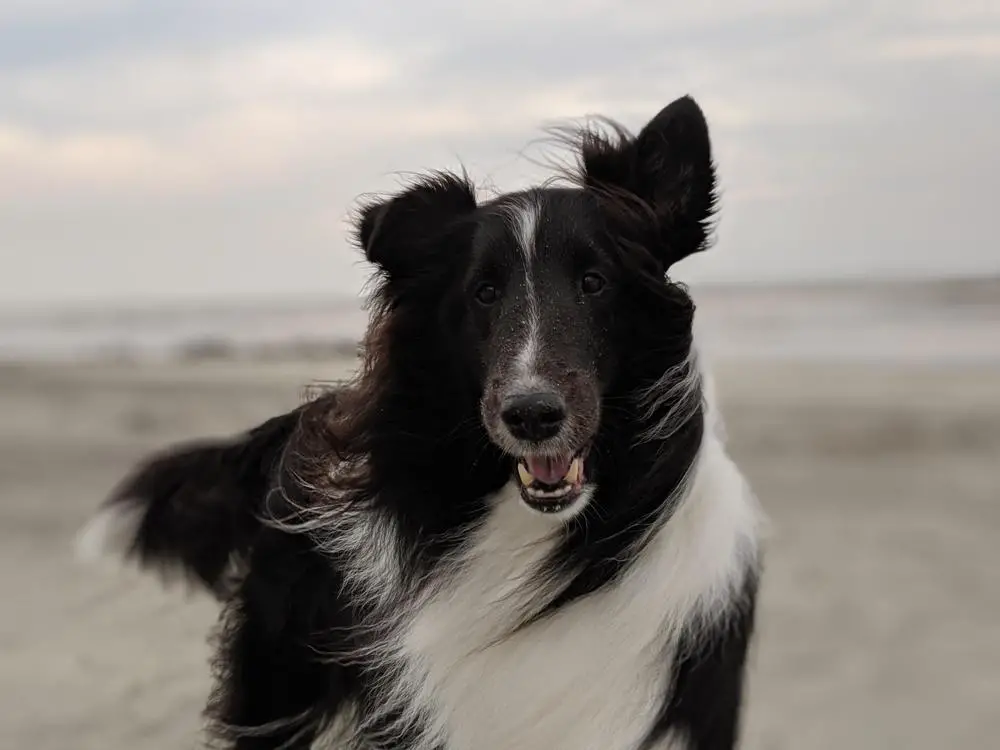
How Intelligent are Shetland Sheepdogs?
| Shetland Sheepdog | |
|---|---|
| Intelligence Rank | 6 out of 130 dog breeds |
| Trainability | Tend To Learn New Commands After Fewer Than 5 Repetitions |
According to Prof. Stanley Coren, a Canadian psychology professor/dog trainer, the total intelligence that a dog demonstrates is the addition of three types of intelligence. These intelligence types are:
- Instinctive Intelligence: This is the natural intelligence that comes from instinct. For example, dog breeds that have been historically bred to be guard dogs will have a high `guarding` intelligence compared to dogs that were not bred for guarding.
- Adaptive Intelligence (learning and problem-solving ability): This indicates what a dog can learn to do for himself or herself. Adaptive intelligence is specific to each dog, and not breed specific. You can improve your dog`s adaptive intelligence by investing time to train your dog.
- Working/Obedience Intelligence: This type of intelligence is breed-specific. Certain dog breeds tend to have higher working/obedience intelligence than some other breeds. This intelligence is the closest to what we might call school-learning ability and it is based upon what the dog can learn to do when instructed by humans. This type of intelligence can be measured for each dog breed and compared to that of other dog breeds.
Professor Stanley Coren measured and ranked the working intelligence of about 130 different dog breeds.
Prof. Coren found that the Shetland Sheepdog has an obedience intelligence rank of 6 out of 130 dog breeds. Thus, Prof. Coren put Shetland Sheepdogs in the `Brightest Dogs` category.
This means that Shetland Sheepdogs tend to learn new commands after fewer than 5 repetitions.
However, we should mention that a dog should not be judged based on its intelligence alone. There are other important factors you need to consider when deciding on which dog breed to get. These other factors include sociability, adorability, and compatibility of the dog breed with your lifestyle.
See the intelligence ranking of some other dog breeds below:
| Breed | Intelligence Rank |
|---|---|
| Standard Poodle | 2 |
| Shetland Sheepdog | 6 |
| Belgian Tervuren | 14 |
| Brittany | 19 |
| Irish Water Spaniel | 24 |
| Vizsla | 25 |
| Welsh Springer Spaniel | 31 |
| Manchester Terrier | 32 |
| Affenpinscher | 37 |
| Dalmatian | 39 |
| Kuvasz | 42 |
| Scottish Deerhound | 47 |
| Boxer | 48 |
| Chinese Shar-Pei | 51 |
| Skye Terrier | 55 |
| Italian Greyhound | 60 |
| Saint Bernard | 65 |
| Pekingese | 73 |
| Bloodhound | 74 |
| Basenji | 78 |

How Popular are Shetland Sheepdogs with New Dog Owners?
Every year, the American Kennel Club (AKC) publishes information on how popular a dog breed is in that particular year. The AKC gets the popularity information of a breed from how many dogs of that breed the owners register with the AKC every year. The AKC collects this data for about 200 dog breeds.
The graph below shows the popularity trend of the Shetland Sheepdog.
The popularity of the Shetland Sheepdog averaged over the years is Number 24 out of about 200 dog breeds.

Do not get a dog breed just because it is a popular dog breed. And do not reject a dog breed just because it is an unpopular breed.

Health Problems in Shetland Sheepdogs and How to Prevent Them
Every dog breed has its own set of health problems that it tends to develop. There is nothing like a perfect dog breed.
The Shetland Sheepdog is prone to certain genetic health conditions. The Orthopedic Foundation for Animals (OFA) is an organization that keeps track of genetic health problems in dog breeds.
From the extensive records that the OFA keeps, the OFA knows what health problems each dog breed is naturally prone to develop.
Hence, the OFA recommends which health screening breeders should perform on a dog breed to make sure that the breeders won`t breed `defective` dog parents that can pass down defective genes to their puppy offspring.
If you want a Shetland Sheepdog puppy that will grow up to be healthy, make sure that your Shetland Sheepdog breeder screens your puppy or your puppy`s parents for the health problems that the OFA recommends for your puppy`s breed. This will increase the chances that your puppy is free from genetic defects.
The following are the health tests that Orthopedic Foundation for Animals (OFA) recommends that breeders should screen Shetland Sheepdogs for:
- Cardiac Evaluation
- Dentition
- Eye Examination- Recommend evaluation every year until age 5, every 2 years thereafter until age 9.
- Hip Dysplasia
You can find out more about OFA`s recommended tests for Shetland Sheepdogs here.

How to Take Care of Shetland Sheepdog
To take good care of your Shetland Sheepdog, you need to make sure that you groom your Shetland Sheepdog regularly.
Secondly, you need to find a veterinarian in your area that will routinely check the health status of your Shetland Sheepdog regularly, and give you appropriate recommendations on your Shetland Sheepdog`s preventative care.
Thirdly, you need to commit some time to exercise your Shetland Sheepdog daily. Regular exercise helps improve the health and quality of life of your Shetland Sheepdog.
Also, you need to feed your Shetland Sheepdog high-quality dog food, and the food should be of the right amount to prevent your Shetland Sheepdog from getting overweight or underweight.
See our recommendations on what to feed the Shetland Sheepdog and how much food to feed the Shetland Sheepdog at different life stages.
Finally, you need to make sure that your Shetland Sheepdog has access to clean water all the time. See our recommendations on how much water your Shetland Sheepdog needs to drink at different ages.
Dog Breeds That Are Similar to Shetland Sheepdogs
If you have not made up your mind on which dog breed to get, you may also want to consider some other dogs similar to the Shetland Sheepdog.
We crunched the numbers and found that the following dog breeds that have similar behavior and temperament as the Shetland Sheepdog:
- Collie (81 percent match with Shetland Sheepdog). Learn more about the Collie here.
- Keeshond (77 percent match with Shetland Sheepdog). Learn more about the Keeshond here.
- Pembroke Welsh Corgi (79 percent match with Shetland Sheepdog). Learn more about the Pembroke Welsh Corgi here.

Other Things to Know About Shetland Sheepdogs
Here are some of the very important characteristics of the Shetland Sheepdog that you need to know about the Shetland Sheepdog breed:


